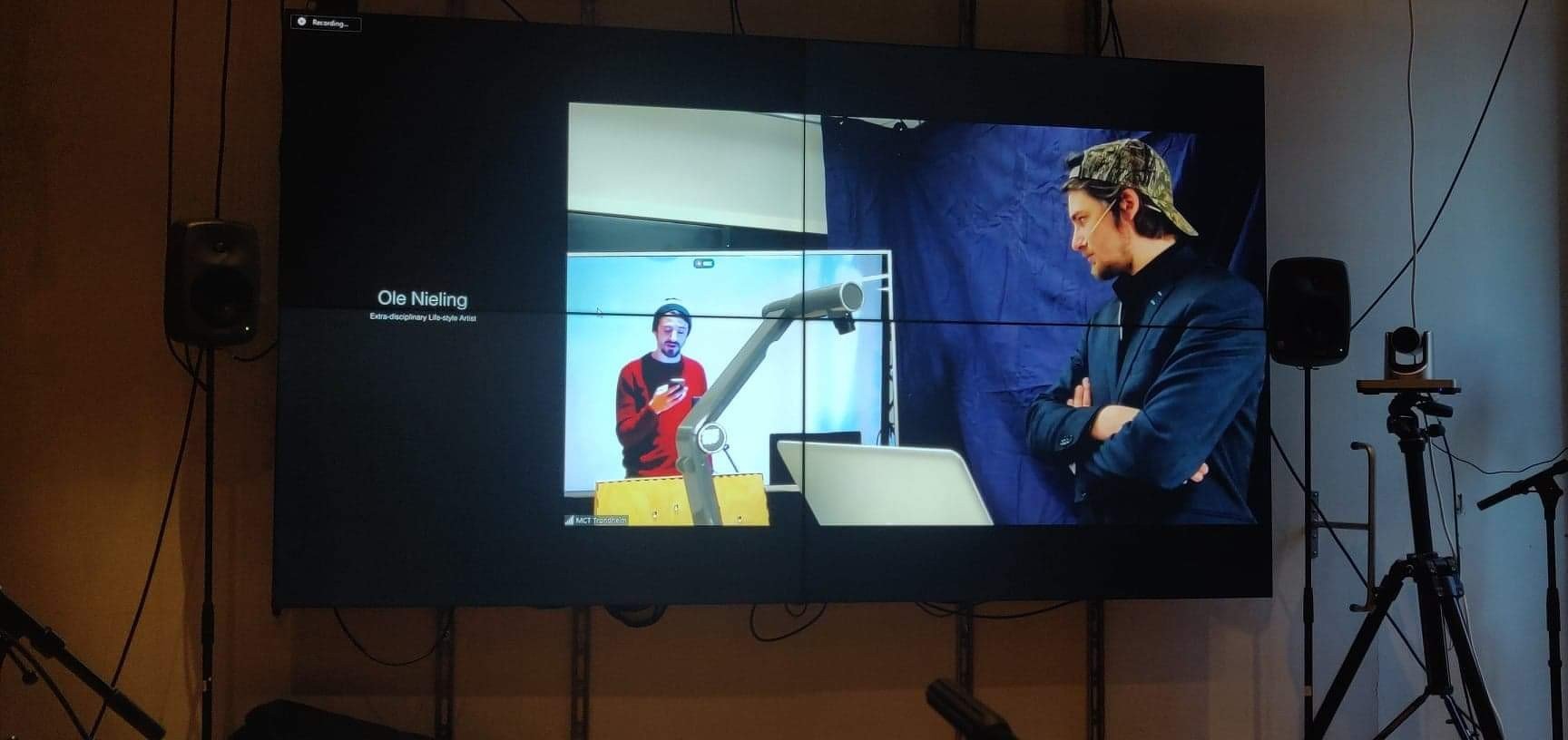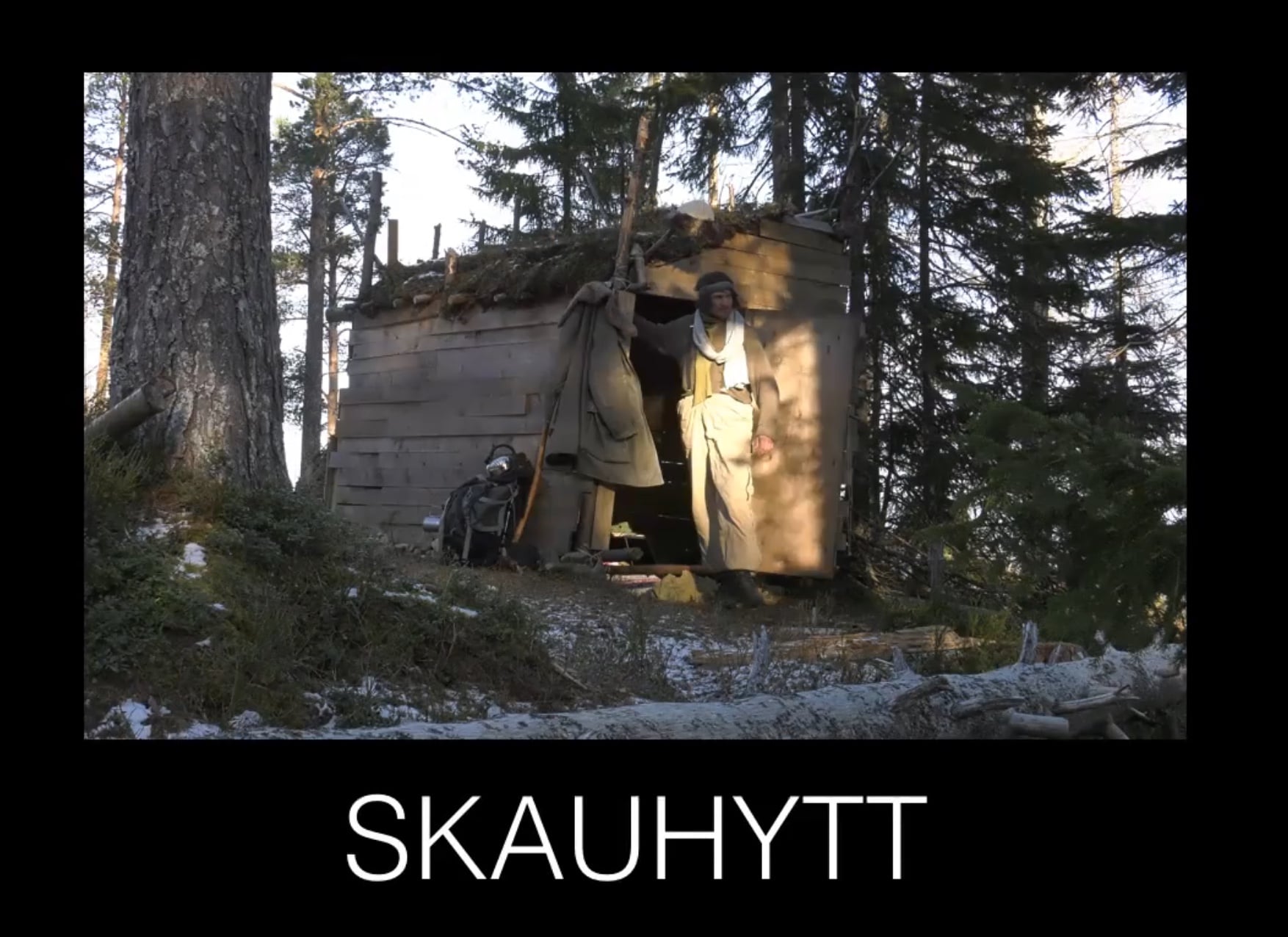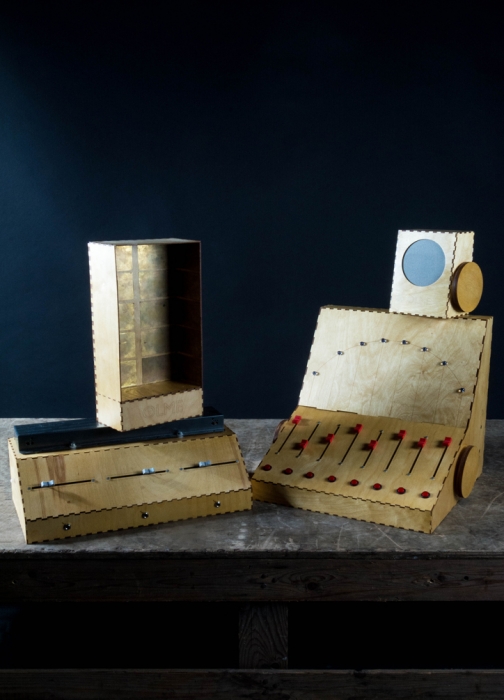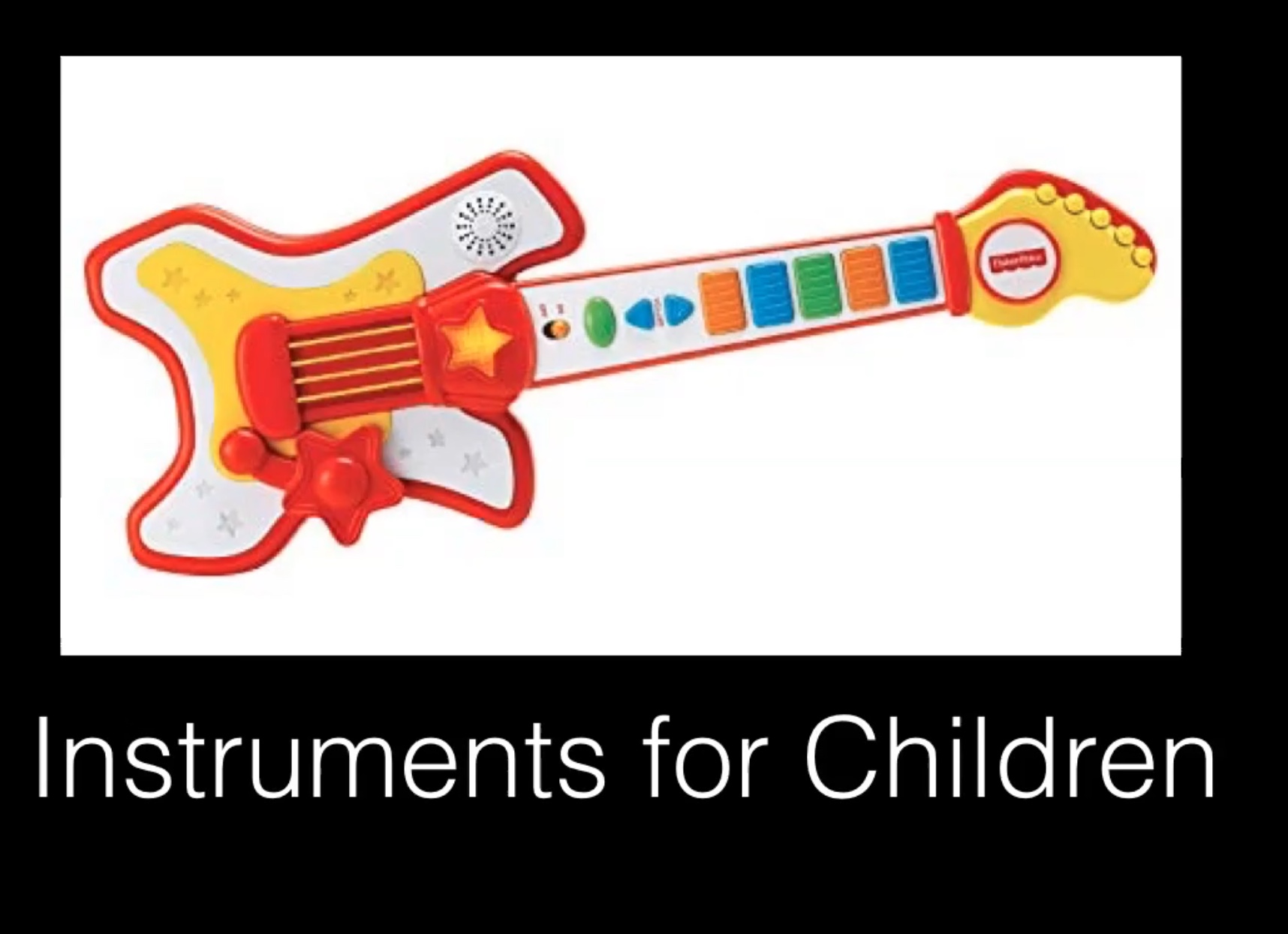Ole Neiling Lecture
MCT Sonification Lecture - Ole Neiling
http://www.ole.wtf/
I had the pleasure of introducing Ole Neiling, a extradisciplinary ‘life-style’ artist. This was part of a series of lectures held over the portal in the sonification and sound design module.

I firstly met Ole over the portal, as his talk was being hosted in Trondheim. I was in Oslo. This was an experience; he was very polite when I probably pronounced his name incorrectly - lost in portal translation! After doing the introductions and a little delay, the lecture began. There was a lot of content – So as well as writing about who Ole Neiling is, I will also touch on some of the core and interesting elements of the lecture.
Background and Bio
Ole playfully researches the tension amongst the fields he is expert in: music, visual art, performance, new media and craftsmanship. These mixtures result in a diverse body of work with as common denominator the mentality that: Instead of accepting predetermined notions (the famous “It’s just the way it is”), one could also wonder why things are the way they are and act upon the findings.
Ole’s has achieved a lot in his career – studying in the UK, Holland and Norway, and winning three awards in 2018 including the Bcademy Graduate Award.
One of his main influences has been with recorder building. In November 2017 Ole started an apprenticeship at the world renowned workshop of Adriana Breukink. This allowed a daily insight in traditional instrument-building alongside an artistic practise – this theme of interdisciplinary and extradisciplinary practices is important to Ole’s work, and is central to the talk he gives over the portal to us lucky participants.
Ole’s themes he discusses are; Music and language, what makes you human, what makes trends and also how to brainwash children! The first half he shows how he thinks about his work and some examples, second half into how he prepares and works on the projects themselves – as well as a brief look into the instruments he has created for children.
Project Examples

The first project shown touches on Ole’s core ideals an an artist, so was a great way to start of the talk. Skauhytt is a cabin project created by Ole Nieling that has been traveling around Europe. It is an experiment how to apply artwork in a secondary level. Ole Gave 9 artists the experience of being in the cabin staying in the forest, and they were asked to produce art during this experience (artwork on a secondary level). This explores themes such as what makes us human? Ole recollects about talking to himself when alone at the cabin. He relates this to keeping ones’ humanity. The area for language use in the brain is also the same as tool preparation. This issue of human learning is a reoccurring theme in Ole’s talk and work. He also explains how he had to gain many skills, from PR to survival to achieve this project, linking to the extradisciplinary practices Ole promotes as well.
Another project mentioned was Esoterrorism - mobile FM radio pirating, with all the equipment on a backpack. He mentions the future of a possible “analog” open network of the future after FM has been disused, like a retro open internet of sorts. Interestingly he looked for FM stations around Norway whilst travelling through, hearing only a few local stations on his way to Trondheim.
A good proportion of the talk was discussing how we, and children learn. One project could be seen as quite controversial - “my first fire”. This is a surprising twist to the “kids do not play with fire” social norm. For Ole, this kit is a way to get into a discussion about how mans relationship with fire has changed, and especially children in cities that could benefit from some teaching on how to start - and control a fundamental part of human history - fire. As Ole states at least some discussion may come from it.

OLME - Instrument Prototype for Kids.
Children learn a universal language early on, and learn far deeper than an adult. Ole shows many examples proving this - coca cola’s pushing their brand on children, and Genie Wiley a dutch girl who couldn’t learn grammar after being isolated from human society. During Ole’s preparation for this project he derived some inspiration. Children are almost continually in a state off flow (1975 Mihaly Csikszentmihalyi) and humans can have a ‘eureka’ moment (Pythagoras, Kairos). It should look inviting for exploration - a space station console is shown as an example of what a child would love to play with! Lift buttons also are great for excitement with children- always responsive, lights up and moves the lift instantly!

Ole wanted to produce a learning instrument for children that could be more like playing with clay – a musical sandbox of sorts. This will differ from the plastic, fake instruments regularly on the market today.

Later in the talk after asked during questions, he shows his large, wooden boxes that he has created. A labour of love – he explains how he needed to learn how to solder properly to create it.
Questions and Conclusions
As part of the questions I asked what makes being extradisciplinary in practice help in a sonification career? Ole has many disciplines, from music to gardening. As he states, fishing and fine arts do not normally relate to each other - but when both are combined possibly a specialist in fine art may find inspiration from fishing, and vice versa. This crossover of knowledge and techniques can result in interesting ideas, and seems to be more and more relevant in todays ever increasing changing world – including in a subject such as sonification, which is rather new and can involve many methods.
Another takeaway I get from this talk is the importance of introducing of exploring the world through sound. I found a connection between the lack of sound as a medium to portray data as a parallel to the lack of children learning sound as exploration experience. As a child we are told to draw what we want – explore through sight in many ways but to a lesser extent make whatever sound we like – explore through sound. Ole Neiling by creating these sandbox (what about the name “soundbox”?) tools for children is in some way addressing this fact – and I find that very inspiring.
Portal Experience
Lastly a mention of the Portal. It can feel a little jarring speaking over a string of multiple screens to two or more audiences. This was a worthy experiment though, I felt that the introductions worked, not just because of the novelty factor of being in another city, but on an aesthetic level I thought the discussion was framed well in the portal, and the setting works thematically with the sonification subject matter we are studying.
http://www.ole.wtf/
